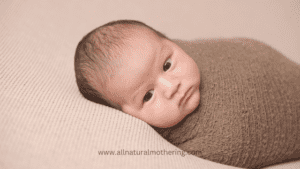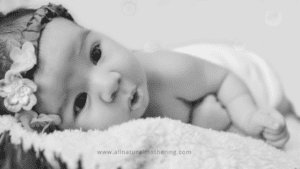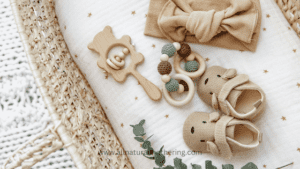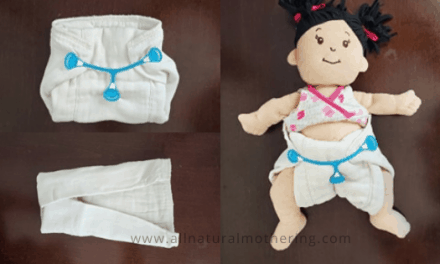When you first step into the cloth diapering world, you hear so many opinions floating around.
What someone approves, others despise, so and so forth.
Some even hand out a perpetual list of Do’s and Don’ts before you even made your mind on Cloth diapering.
The truth is, cloth diapering is simple.
They are just diapers, that needs to be washed and cared like any other laundry you deal with.
While there is no “one’ way to cloth diaper or as a matter of fact, there is no ‘the right’ way to cloth diaper, there are, however, some regiment Don’ts that all cloth diapering experts seem to agree with.
While I’m no expert, I have learned all this the hard way – through numerous personal goof-ups.
After doing all things possible to destroy my cloth diapers, I can safely that if you watch out for these pointers you can have saved yourself some pain from having to deal with leaks, stink, and stripping.
1. DON’T place Microfibre directly against the skin:
Microfibre is very absorbent, while it is a good thing, it can also be extremely drying when placed directly against baby’ skin.
When placed against the skin, microfibre tends to absorb all the moisture from baby’s skin and leave them dry and itchy.
What you can do is either stuff your microfibre inserts inside a pocket diaper or place a fleece liner on top of the insert itself.
Some microfibre inserts do come with a sewn in microfleece lining which can be put against the skin.
2. DON’T go too long without changing:
Cloth diapers are simply fabrics that hold pee. And just like any other fabric, they have a limit to how much liquid they can hold, passing which they leak.
Unlike disposable diapers, Cloth diapers need to be changed frequently.
Roughly, newborn babies should be changed every 2 hours and toddlers can be changed every 3 – 4 hours.
Expecting cloth diapers to absorb like disposables is irrational and can be the cause of leaks, diaper rashes resulting in an infuriating cloth diapering experience.
3. DON’T use Fabric softeners/Dryer Sheets:
Diapers and inserts, especially those made of natural fibres gets stiff and scratchy after regular wash and wear.
It is indeed, tempting to use fabric softeners to your load of diapers in an effort to retain their softness.
But before you do so, let me explain what fabric softeners really does.
Fabric softeners/ Dryer sheets contain oils or chemical that sit on your diapers forming a barrier top layer that eventually starts to repel liquids.
I don’t recommend using fabric softeners for any laundry, it is to be strictly foregone when it comes to cloth diapers.
I always line dry my diapers and inserts and then throw them in the dryer with a few Wool dryer balls and let it tumble dry for a short while. That usually makes them a bit softer.
4.DON’T use petroleum-based diaper cream:
When your little one gets a horrible diaper rash, the first thing you want to do is to lather a big chunk of diaper cream all over her bum.
While you are in the hurry burry, don’t forget to check one tiny detail about the diaper cream.
Don’t know where I’m headed? I’m talking about the “Cloth safe” check mark!
Some diaper creams are petroleum-based which when comes into contact with cloth diapers forms an oily barrier layer that can devour the diapers of its absorbent nature.
Look for ‘Cloth Safe’ or “petroleum free’ labels or simply use coconut oil.
Some rashes can be persistent and can only be treated with a strong diaper cream, in that case, use a disposable liner to protect your diapers.
5. Don’t complicate your wash routine:
A good wash routine is simple yet effective.
Many drift away from cloth diapers thinking that they need a special wash routine with specially made detergents.
I admit, cloth diaper laundry needs to be tweaked a little bit depending on your washing machine and hardness of your water.
But once you figure that out, washing cloth diapers are just like washing any other laundry.
If you have daunting wash routine, please reach out and ask for suggestions to simplify it.
6. DON’T expose to too much sun:
Sunning diapers is a great way to take out stubborn stains and stinks.
But too much of anything is not always good.
What happens when you let your favorite shirt hanging in the sun for day and night?
The color starts to fade and show signs of wear, right? Same holds true for cloth diapers.
Over sunning or drying in high temperatures breaks the PUL material and can loosen up elastics.
Alternatively, you can dry your diapers in a shade or indoors in a room with good sun exposure.
7. DON’T Bleach/Stripe regularly:
If you are constantly stripping and bleaching your diapers, take it as a sign to diligently review your wash routine.
I stand perplexed when people tell me that they bleach every month!
In my opinion, bleaching/ stripping should only be done to used diapers or to address major ammonia buildup or yeast infection.
8. DON’T go too long without washing:
I wash every 3rd day and I think most do that. Letting dirty diapers sit in poop and pee longer than that can cause some nasty things to your diaper (stains, stink, mold, Need I say more?)
9. DON’T skip Pre-wash:
I always recommend a cold pre wash with 1/4 of the detergent that you normally use for a full load.
What this does is, it washes out all the pee and poop from the diapers and sets it right for your main wash to take care of the rest.
Skipping Pre-wash means you are basically washing your cloth diapers in poop-y water. Detergents cannot perform their best in poop-y water.
10. DON’T forget to dump the poop in the toilet:
Even if you forget all the things I said above, please REMEMBER this!
They say breast milk poop can go straight to the diaper pail, but I always rinse them out before throwing them in the diaper pail.I have a diaper sprayer and spray them off, hardly takes a minute.
Formula and solid poop should certainly be rinsed/dumped in the toilet before they head to your washing machine. Rinsing poop off makes it easier to get poop stains off your diaper and you certainly don’t want poop sitting in your washing machine (yuck!)
This is it! Just remember these simple rules and you’re all set. Happy cloth diapering! To make sure, you never forget this, pin this post below!













